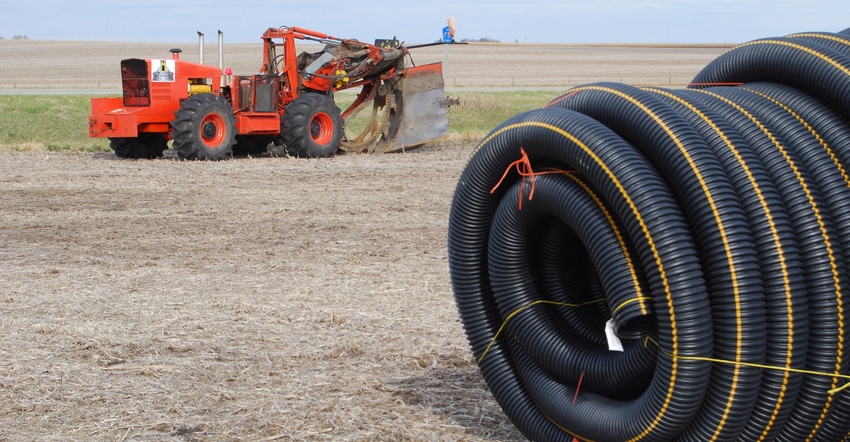
The controversial lawsuit by Des Moines Water Works against drainage districts in three northwest Iowa counties was dismissed March 17. Drawing national attention, the suit was filed by the utility in 2015 claiming tile drainage systems in fields are responsible for funneling high levels of nitrates into the Raccoon River, a source of drinking water for 500,000 central Iowa residents. Now, a federal judge has ruled that Iowa’s water quality problems are an issue for the state Legislature to resolve, not the court system. There’s still a need for farmers and landowners to take steps to reduce nitrate loss.
Subsurface drainage systems are an important part of crop production. Flat, poorly drained land has become some of the most productive in the world, thanks to installation of tile drainage. However, improperly designed drainage systems provide less-than-desired results for the investment, and many older systems need updating. Also, fields with drainage systems that are delivering high levels of nitrate-N to streams, lakes and rivers need water quality protection practices installed: cover crops, buffer strips, wetlands and edge-of-field practices such as bioreactors and saturated buffers.
“While subsurface drainage is important for crop production, we need to consider the design of these systems for proper function, as well as to minimize nitrate loss,” says Greg Brenneman, an Iowa State University Extension ag engineer. Drainage systems need to be designed for efficient collection of excess soil water, as well as adequately moving the water to the outlet. Efficient collection of water involves proper depth and spacing of drain lines for the soil type. Selecting the correct size, type and grade of the main lines is required for providing adequate water transport.
Reducing nitrate loss
Depending on soils and topography, there are designs that can be used to reduce nitrate loss, Brenneman notes. These designs include drainage water management as well as installation of edge-of-field nitrate reduction practices.
Since 2007, a study has been ongoing at ISU’s Southeast Iowa Research Farm to determine the impact of shallow, controlled, conventional and no drainage on crop yields, subsurface drainage volumes and nitrate loss through tile line outlets. Conventional plot tile lines are installed at a depth of 4 feet with a spacing of 60 feet. Shallow and controlled drainage plots represent water management. Controlled tile lines are the same design as conventional. Controlled drainage plots are kept undrained following harvest until early spring. Shallow tile lines are installed 2.5 feet deep and spaced 40 feet apart.
Over the nine-year study, the controlled and shallow drainage plots reduced drainage by 48% and 50%, respectively, compared to conventional drainage plots. Since the drainage water management practices had little impact on nitrate concentration, the overall loss of nitrate was reduced by 51% and 40% by controlled and shallow drainage, respectively.
In general, no significant differences were seen in corn grain yields between drainage management systems, but there were overall yield benefits of the drainage systems compared to undrained systems. Over the nine years, there was a 13-bushel-per-acre increase in corn yield between the undrained system and conventional system. Soybean yields increased about 6 bushels per acre with conventional drainage compared to undrained. Because the undrained plots were adjacent to drainage plots and all plots were planted on the same date, potential yield benefits of the drainage systems are likely conservative.
“While subsurface drainage is important for crop production, there is a need to use practices that can reduce downstream delivery of nitrate,” says Brenneman. “Our study found shallow and controlled drainage practices have potential to reduce downstream nitrate loss. These drainage water management systems had minimal impact on yield.”
About the Author(s)
You May Also Like




